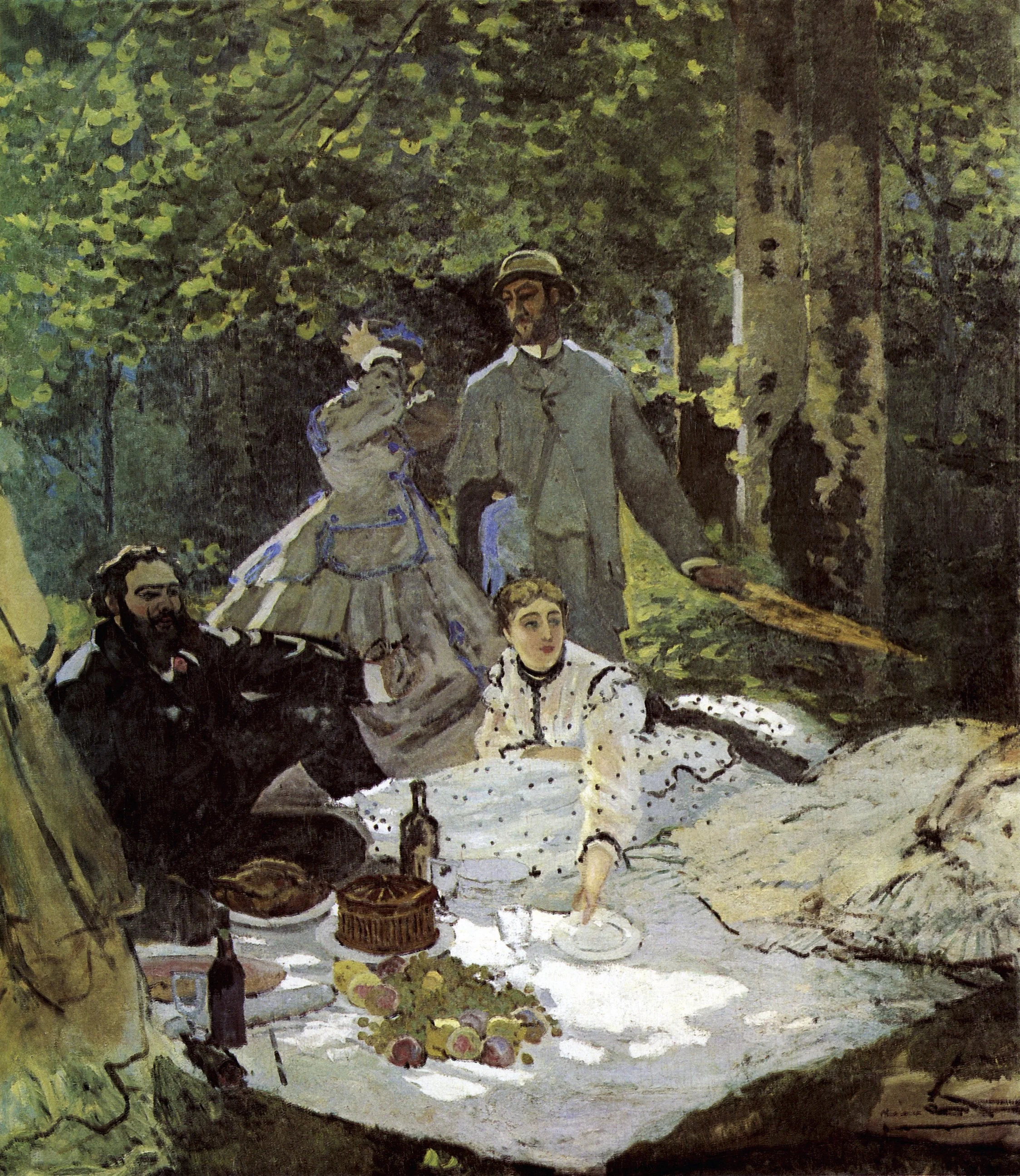Reviving the Art of Outdoor Dining
Luncheon on the Grass by Claude Monet.
The word “picnic” evokes images of gingham blankets, woven baskets, and the gentle hum of bees in a sun-dappled meadow. Yet, the origins of this cherished pastime reveal a more complex history, intertwined with the evolution of leisure and social customs. Derived from the French “pique-nique,” the term first appeared in the 17th century, describing informal gatherings where each guest contributed a dish—a democratic act of culinary collaboration. This communal spirit reflected the values of a burgeoning bourgeoisie, eager to emulate the opulence of aristocratic feasts while embracing a new ethos of equality and camaraderie. Over time, the concept crossed borders and classes, evolving from exclusive garden banquets of the elite to the pastoral outings celebrated by Victorian England’s burgeoning middle class and the industrial laborers seeking respite in the countryside. The picnic, in its many forms, has remained a testament to humanity’s enduring desire to merge nourishment with nature.
The charm of outdoor dining lies in its ability to collapse boundaries—between formality and ease, the human and the natural, the structured and the spontaneous. In an age of relentless screens and curated digital identities, reviving the art of the picnic offers an antidote: a tactile, sensorial experience that reconnects us with the rhythms of nature and the simple pleasure of shared meals. The key to a refined outdoor dining experience is intention—a thoughtful blend of practicality and aesthetics that elevates the act without tipping into ostentation. This requires not only careful planning but also an appreciation of the ephemeral beauty that defines dining under an open sky.
Start by choosing a location that resonates with the spirit of renewal that defines spring. A clearing in a local park, a quiet lakeside spot, or even a friend’s backyard can serve as the stage for your alfresco meal. Consider the interplay of light and shade, the texture of the ground beneath the blanket, and the ambient sounds that will frame your gathering. Nature’s imperfections are part of the charm, but a little forethought—a waterproof mat beneath your blanket or a small vase of wildflowers—can transform the mundane into the poetic. Pay attention to accessibility as well; a slightly elevated patch of ground can offer both a better view and protection against dampness.
The menu, too, should reflect the season’s exuberance and the convenience of portability. Eschew the predictable sandwiches and chips for a tableau of vibrant, portable dishes. Think marinated spring vegetables, such as asparagus and radishes tossed with lemon and olive oil, or herb-flecked grain salads featuring farro or quinoa studded with roasted cherry tomatoes and feta. Chilled pea soup served in jars or thermoses adds an elegant touch, while a loaf of crusty bread, artisanal cheese, and a selection of cured meats can serve as the meal’s foundation. Fresh fruit, from strawberries to ripe apricots, can provide both a palate cleanser and a burst of natural sweetness. For beverages, consider a thermos of herbal iced tea infused with mint or a bottle of sparkling wine to lend an air of festivity. Dessert should be equally unfussy yet delightful—perhaps a lemon tart with a crisp buttery crust or a tin of homemade shortbread cookies sprinkled with lavender sugar.
Beyond sustenance, consider the small rituals and details that imbue the meal with meaning. Bring a linen napkin to unfurl with a touch of ceremony, a favorite book of poetry to read, or a small sketchpad for capturing the moment in watercolor. Such gestures, though minor, invite mindfulness and enrich the experience. A portable Bluetooth speaker with a curated playlist of gentle classical or acoustic music can enhance the ambiance without overpowering the natural sounds of the setting. And while the temptation to document the scene for social media may arise, resist it—let the memory exist unmediated, imprinted in your mind rather than an algorithm. Encourage your companions to do the same, creating a shared sense of presence and connection.
As we step into spring, let the picnic serve not only as a meal but as a meditation. In sharing food under an open sky, we participate in an ancient ritual that connects us to the earth and to each other. To revive the art of outdoor dining is to honor both history and the fleeting beauty of the present—a reminder that even in the modern world, we can carve moments of grace from the simplest pleasures. This practice, steeped in history yet endlessly adaptable, offers a bridge between our past and our aspirations for a more connected and intentional future.


